Cecilia Summers
Nondeterminism and Instability in Neural Network Optimization
Mar 08, 2021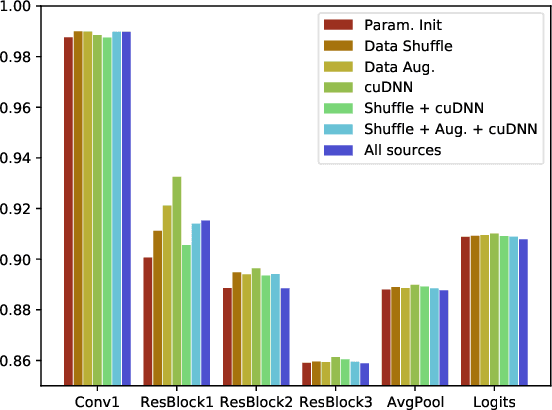

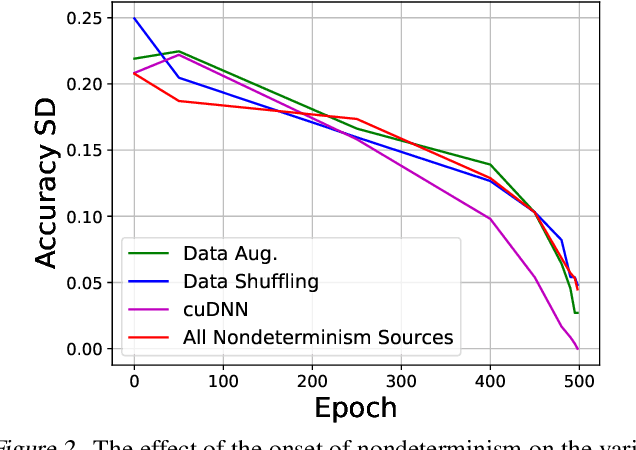

Abstract:Nondeterminism in neural network optimization produces uncertainty in performance, making small improvements difficult to discern from run-to-run variability. While uncertainty can be reduced by training multiple model copies, doing so is time-consuming, costly, and harms reproducibility. In this work, we establish an experimental protocol for understanding the effect of optimization nondeterminism on model diversity, allowing us to isolate the effects of a variety of sources of nondeterminism. Surprisingly, we find that all sources of nondeterminism have similar effects on measures of model diversity. To explain this intriguing fact, we identify the instability of model training, taken as an end-to-end procedure, as the key determinant. We show that even one-bit changes in initial parameters result in models converging to vastly different values. Last, we propose two approaches for reducing the effects of instability on run-to-run variability.
Improved Adversarial Robustness via Logit Regularization Methods
Jun 10, 2019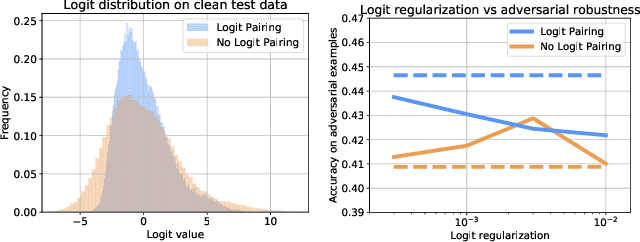

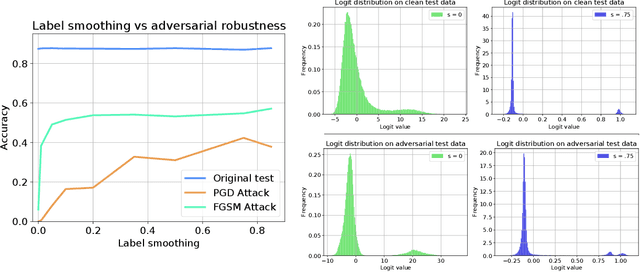

Abstract:While great progress has been made at making neural networks effective across a wide range of visual tasks, most models are surprisingly vulnerable. This frailness takes the form of small, carefully chosen perturbations of their input, known as adversarial examples, which represent a security threat for learned vision models in the wild -- a threat which should be responsibly defended against in safety-critical applications of computer vision. In this paper, we advocate for and experimentally investigate the use of a family of logit regularization techniques as an adversarial defense, which can be used in conjunction with other methods for creating adversarial robustness at little to no marginal cost. We also demonstrate that much of the effectiveness of one recent adversarial defense mechanism can in fact be attributed to logit regularization, and show how to improve its defense against both white-box and black-box attacks, in the process creating a stronger black-box attack against PGD-based models. We validate our methods on three datasets and include results on both gradient-free attacks and strong gradient-based iterative attacks with as many as 1,000 steps.
Four Things Everyone Should Know to Improve Batch Normalization
Jun 09, 2019


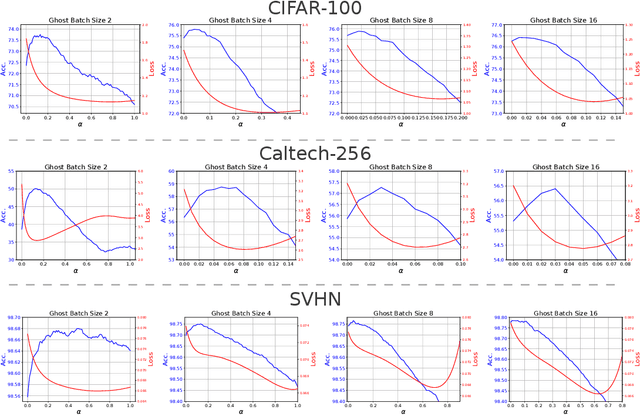
Abstract:A key component of most neural network architectures is the use of normalization layers, such as Batch Normalization. Despite its common use and large utility in optimizing deep architectures that are otherwise intractable, it has been challenging both to generically improve upon Batch Normalization and to understand specific circumstances that lend themselves to other enhancements. In this paper, we identify four improvements to the generic form of Batch Normalization and the circumstances under which they work, yielding performance gains across all batch sizes while requiring no additional computation during training. These contributions include proposing a method for reasoning about the current example in inference normalization statistics which fixes a training vs. inference discrepancy; recognizing and validating the powerful regularization effect of Ghost Batch Normalization for small and medium batch sizes; examining the effect of weight decay regularization on the scaling and shifting parameters; and identifying a new normalization algorithm for very small batch sizes by combining the strengths of Batch and Group Normalization. We validate our results empirically on four datasets: CIFAR-100, SVHN, Caltech-256, and ImageNet.
Improved Mixed-Example Data Augmentation
Oct 18, 2018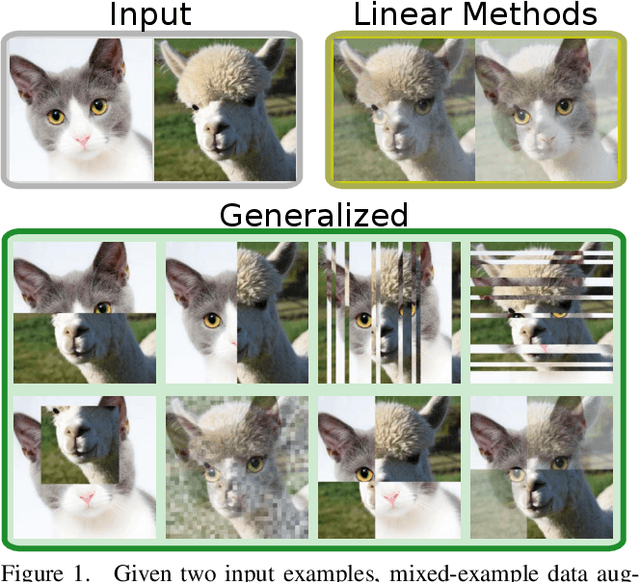
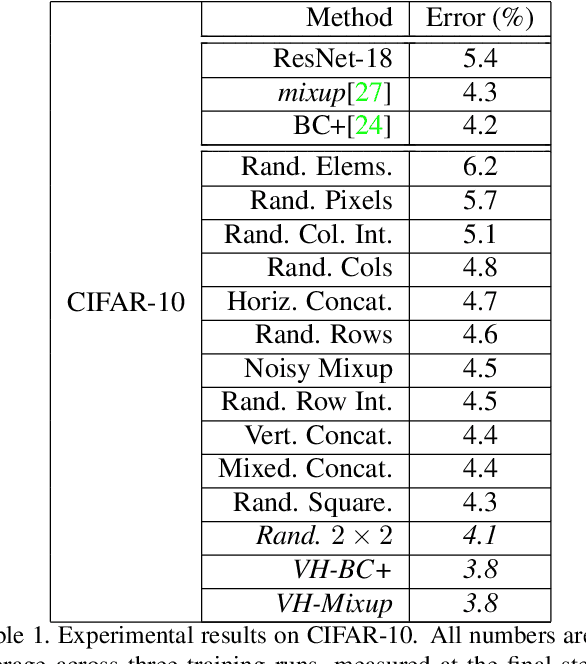
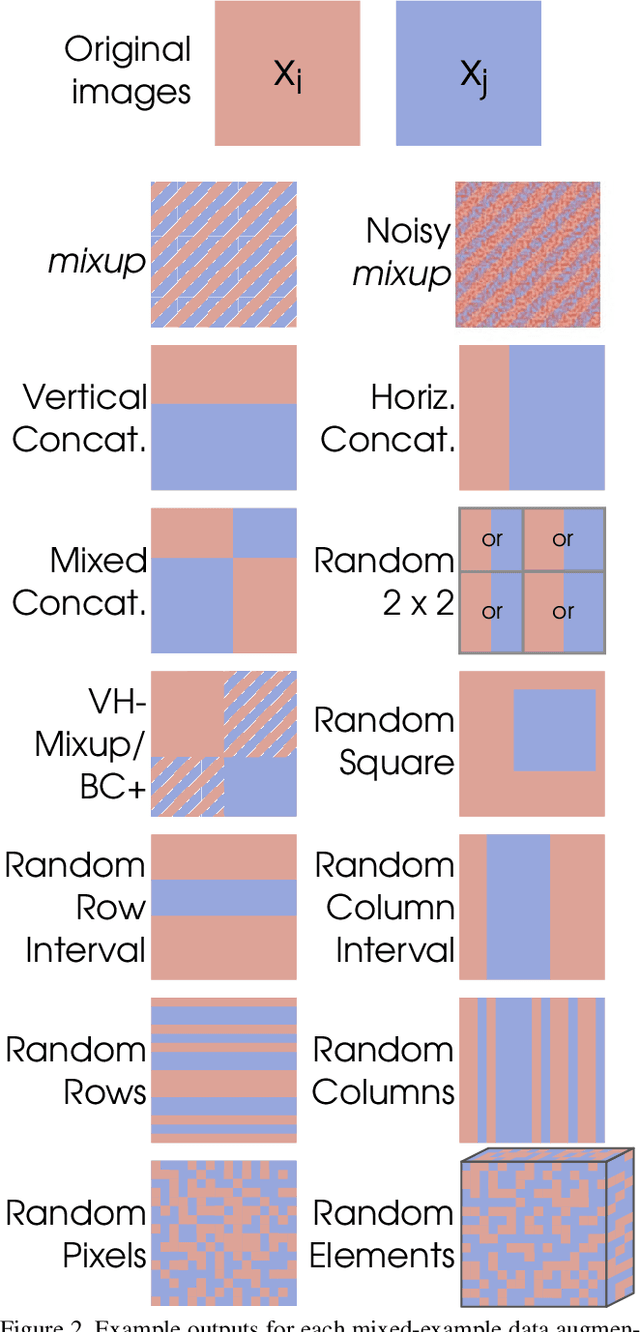
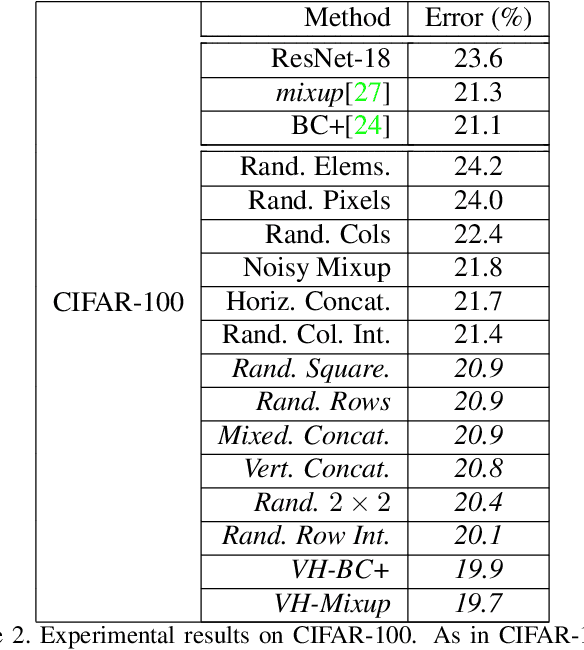
Abstract:In order to reduce overfitting, neural networks are typically trained with data augmentation, the practice of artificially generating additional training data via label-preserving transformations of existing training examples. While these types of transformations make intuitive sense, recent work has demonstrated that even non-label-preserving data augmentation can be surprisingly effective, examining this type of data augmentation through linear combinations of pairs of examples. Despite their effectiveness, little is known about why such methods work. In this work, we aim to explore a new, more generalized form of this type of data augmentation in order to determine whether such linearity is necessary. By considering this broader scope of "mixed-example data augmentation", we find a much larger space of practical augmentation techniques, including methods that improve upon previous state-of-the-art. This generalization has benefits beyond the promise of improved performance, revealing a number of types of mixed-example data augmentation that are radically different from those considered in prior work, which provides evidence that current theories for the effectiveness of such methods are incomplete and suggests that any such theory must explain a much broader phenomenon.
 Add to Chrome
Add to Chrome Add to Firefox
Add to Firefox Add to Edge
Add to Edge